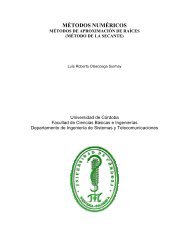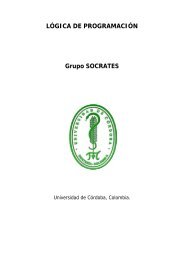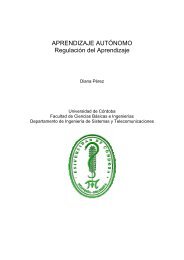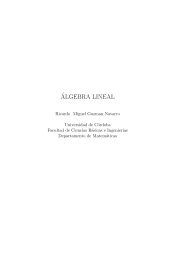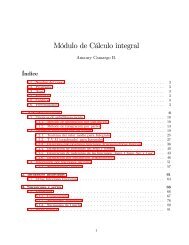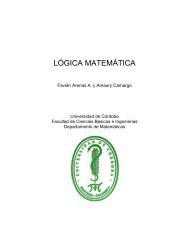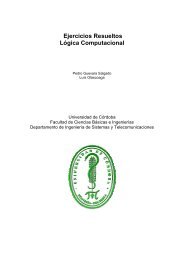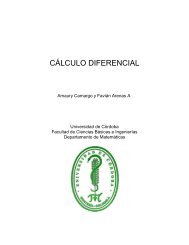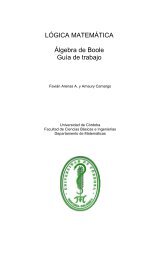CÁLCULO DIFERENCIAL
CÁLCULO DIFERENCIAL
CÁLCULO DIFERENCIAL
You also want an ePaper? Increase the reach of your titles
YUMPU automatically turns print PDFs into web optimized ePapers that Google loves.
5.2 Función derivada y Reglas de derivación. Cálculo DiferencialSolución:1.2.lmx !+0 1x1sin xplm x2 + 3x xx !+1 sin x x 0= [1 1] = lmx !+0 x sin x = 0sin x x 0 cos x 1= lm = = lmx !+0 x 02 x !+0 2xsin x= lm = 0x !+0 2= [1 1] = lmx !+1 x= lmx !+1 x r1 + 3 x= lmx !+11px2 + 3x!q3x 2 2 1 + 3 x11xx= lmx !+1= lmx !+11! 0=0= [1 0]q1 + 3 x11x3x 22x 2 q1 + 3 x 0=0Este límite también podía haberse resuelto multiplicando por le conjugado, o bien, aplicandoinnitésimos.Indeterminación del tipo 0 0 ; 1 0 ; 1 1 Se transforman en un indeterminación del tipo 0 0 ; o1, tomando logaritmos neperianos. En efecto, llamando y al límite en cuestión:1y = lm f (x) g(x)tomando ln en ambos miembros y operando, resulta,ln y = ln lm f (x) g(x) = lm ln f (x) g(x)= lm g (x) ln f (x)Que es un límite del tipo 0 1, y una vez resuelto, resulta:lm g(x) ln f(x)y = eEl límite también puede resolverse aplicando directamente la identidad logarítmica y = e ln x ,lm f (x) g(x) ln lm f(x)g(x)= elm ln f(x)g(x)= elm g(x) ln f(x)= eArenas A. 81 Camargo B.= 3 2



